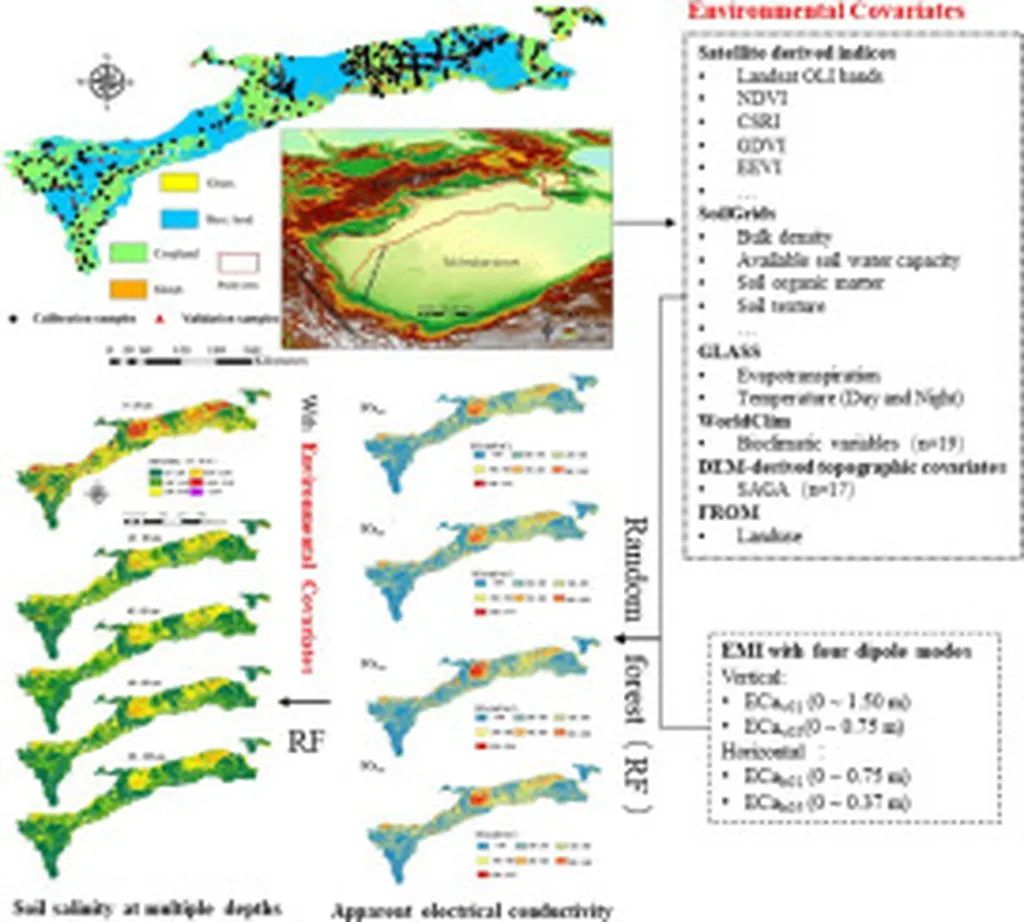In the heart of China’s arid Xinjiang region, a groundbreaking study is reshaping how we think about farming in water-scarce, saline environments. Researchers, led by Guang Yang from the College of Land Science and Technology at China Agricultural University, have developed a multi-objective framework to optimize the allocation of saline farmlands and irrigation water resources. This innovative approach, published in *Agricultural Water Management*, could have significant commercial impacts for the agriculture sector, particularly in arid regions where water scarcity and soil salinization are major challenges.
The study focuses on the Manas River Basin, an oasis in Xinjiang, where agricultural production is hampered by limited water resources and high soil salinity. The researchers employed a combination of remote sensing, machine learning, and optimization algorithms to create a practical framework for managing these challenges. “Our goal was to develop a tool that could help farmers and policymakers make informed decisions about land and water use,” Yang explained. “By integrating high-resolution soil salinity estimation with predictive models and optimization algorithms, we’ve created a system that can balance the need for agricultural productivity with the constraints of water scarcity and soil health.”
The research team used a verified remote sensing inversion method to estimate the spatial distribution of soil salt content (SSC) in the root zone (0–80 cm) for different crops. This data was then used to train XGBoost models, a powerful machine learning algorithm, to predict root-zone SSC, total actual evapotranspiration, and annual maximum NDVI (Normalized Difference Vegetation Index) under various land and water allocation scenarios.
One of the key aspects of the study was the use of the NSGA-II algorithm, a multi-objective optimization tool, to optimize land and water allocation with three objectives: maximizing total cotton yield (TCY), minimizing SSC, and maximizing irrigation water productivity (WPI). The results were promising. The XGBoost models achieved high accuracy (R² > 0.90), and the optimization showed that root-zone SSC could be reduced by 0.06 g kg⁻¹ with minimal improvement in WPI. However, there was a trade-off: TCY dropped by over 2×10⁸ kg, representing a 28% reduction from the 2022 baseline of 7.08×10⁸ kg due to reduced planting area.
The study also involved adjusting crop areas in GIS (Geographic Information Systems) by removing higher-salinity pixels, with an average area deviation of less than 0.8% from optimization results. This level of precision is crucial for commercial agriculture, where every hectare and every drop of water counts.
The implications of this research are far-reaching. By integrating high-resolution SSC estimation, XGBoost, and NSGA-II algorithms, the study offers a practical framework for precise saline farmland management and efficient water use in arid regions. This could lead to more sustainable and profitable farming practices, particularly in areas where water is scarce and soil salinity is high.
As Guang Yang noted, “This research is not just about optimizing water and land use; it’s about creating a sustainable future for agriculture in some of the world’s most challenging environments.” The study, published in *Agricultural Water Management*, is a significant step forward in the field of agritech, offering a blueprint for how technology can be used to address some of the most pressing challenges in modern agriculture.
The commercial impacts of this research could be substantial. By providing a tool for precise land and water management, farmers and agricultural businesses can make more informed decisions, leading to increased productivity and profitability. Moreover, the framework developed in this study could be adapted and applied to other regions facing similar challenges, making it a valuable resource for the global agriculture sector.
In the coming years, as the effects of climate change continue to exacerbate water scarcity and soil degradation, the need for innovative solutions like this will only grow. This research not only shapes future developments in the field but also underscores the importance of integrating advanced technologies into agricultural practices. It’s a testament to the power of interdisciplinary research and a beacon of hope for sustainable agriculture in arid regions.

